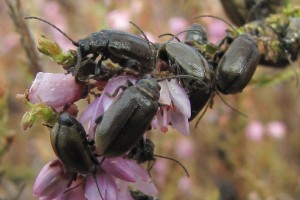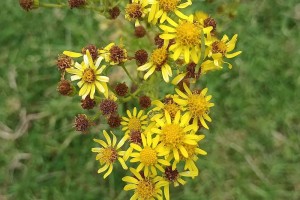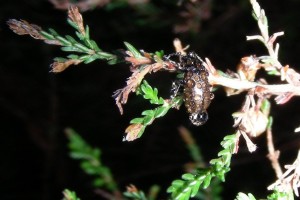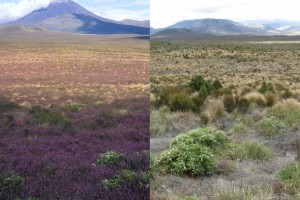Heather
Project overview
Heather was planted into Tongariro National Park (TNP) in 1912 by the then warden of the park to provide habitat for game bird shooting. However, grouse introduced from the UK failed to establish and heather thrived and invaded more than 60,000 ha of the Central Plateau, North Island, outcompeting native vegetation.
Heather beetles are native to north-west Europe where large scale outbreaks can devastate heather. They were first imported from the UK by Manaaki Whenua - Landcare Research as a biocontrol agent for heather in 1992. They were finally released into TNP in 1996 after host range testing and being cleared of a protozoan parasite.
Beetle populations were initially slow to establish, and genetic bottlenecking, poor climate-matching and low foliar nitrogen levels appeared to be contributing factors. However, recent beetle spread has been spectacular at high altitude sites on the Central Plateau with 40,000 ha of damaged heather being mapped in 2021.

Image: large areas of damaged heather (grey patches) in the Waiouru Military Training Area with undamaged heather (purple patches) in the distant background. Photo taken 2021.
Today beetles have likely spread throughout this area and are being moved to other areas in New Zealand where heather is establishing. Research is ongoing to understand the spectacular spread of beetles after a very slow start.
- pdf Scottish ‘laddies’ flown in for genetic rescue - Issue 65, p. 2 pdf File, 813 KB
- pdf Army recruits one million - Issue 49, p.7 pdf File, 1.8 MB
- pdf Big is sometimes best - Issue 43, p.4 pdf File, 246 KB
Key contact






![Heather beetle ([Lochmaea suturalis]) a biocontrol agent introduced in 1996 is shown to only attack its target plant heather ([Calluna vulgaris]).](/assets/Publications/Putaiao/Putaiao-Issue-4/beetles_close__FillMaxWzMwMCwyMDBd.jpg)